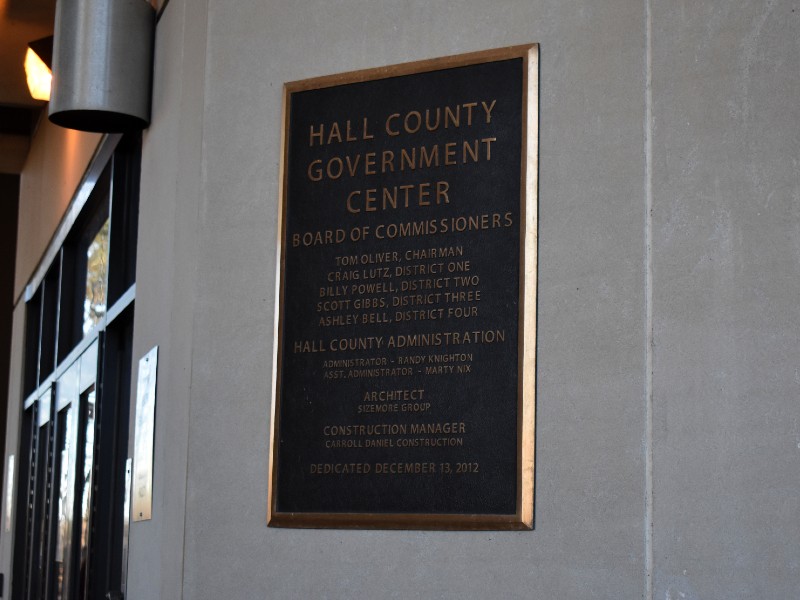The Hall County Board of Commissioners held their first and only public hearing on Thursday for the proposed 2026 fiscal year budget with a vote set to take place at the June 26 meeting.
FY2026 runs from July 1 of this year to June 30 of next year.
The total county-wide budget saw no change from FY2025, staying at $398.5-million.
“We’ve worked very hard to optimize and make sure that we’re running as efficient of a government as possible,” Hall County County Administrator Zach Propes said. “Especially in a period of time where you’ve got year over year inflation … I think that speaks to their vision and leadership in this community and their commitment to financial excellence and being prudent with taxpayer dollars.”
No millage rate was provided in the proposed budget due to delays in the final tax digest.
Hall County Financial Services Director Taylor Samples said that he expects them to get the millage rate at a meeting in August.
“As you all know we’re experiencing delays in receiving the final tax digest due to state law adjustments and software updates needed for the reevaluation of assessment caps that county governments and city municipalities are experiencing statewide for homestead properties,” Samples said at the meeting.
The new budget includes 10 new full-time equivalent positions in the Hall County Government, with a mid-year cost-of-living adjustment based on inflation and “merit factors.”
The total operating funds saw a 1.4% increase, from $314.6-million to $319.1-million, which was offset by a decrease in total capital funds from $83.9-million to $79.5-million.
Capital improvements for FY2026 include 30-miles of road resurfacing, improvements to White Sulphur Road and Highway 365, a roundabout at Lights Ferry Road and McEver Road, and a new library in east Hall.
There are also allocations for improvements to the sheriff’s office gun range and Candler Road landfill.
American Rescue Plan Act (ARPA) remaining dollars sit at $5.8-million which will finally be exhausted in FY2026, putting an end to the pandemic-era funding.
It’s also the final year for Special Purpose Local Option Sales Tax (SPLOST) VIII dollars that Hall County voters agreed to in 2019.
All told, an estimated 40% of the budget will come from property taxes, with another 44% from “other taxes.”
Public safety, general government, and judicial expenditures make up a lion’s share of spending for the county, at 47%, 24%, and 22% respectively.
Broken down even further, salaries and benefits make up $96.4-million of general fund expenditures out of $135.1-million allocated, a 3.6% increase from last year.
The only other notable increase was a 15% increase in parks marina fund expenditures from $1.9-million to $2.3-million, mostly due to two new positions and an increase in utility costs at the three campgrounds that Hall County has a joint management agreement for.
Part of the joint agreement, though, is an example of Hall County’s ability to keep the budget the same year over year according to Propes.
“We entered into those joint management agreements with the Corps … and that ended up helping us generate over a million dollars of camp rental fees,” Propes said.
Despite Hall County’s immense growth, Propes cited the amount of work to keep the budget low for tax payers.
“That takes a lot of hard work by the budget team and the board to manage that and keep those financial numbers at that level of very nominal growth,” Propes said.










